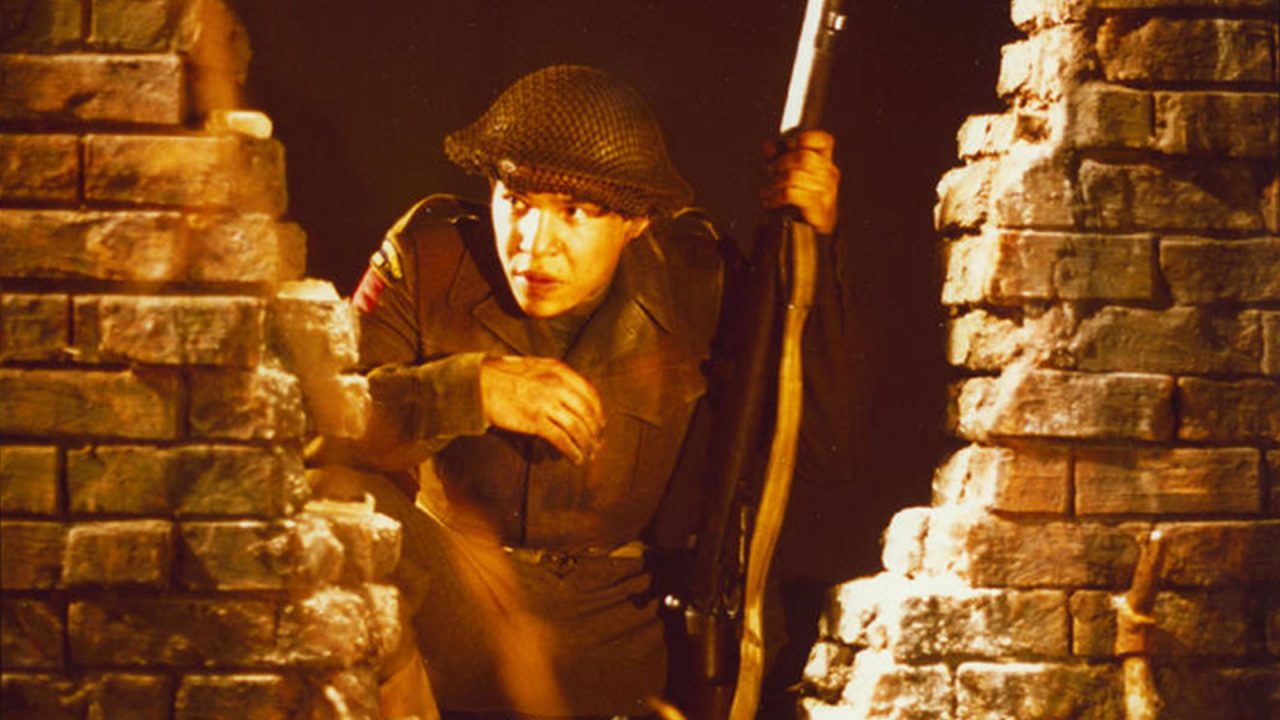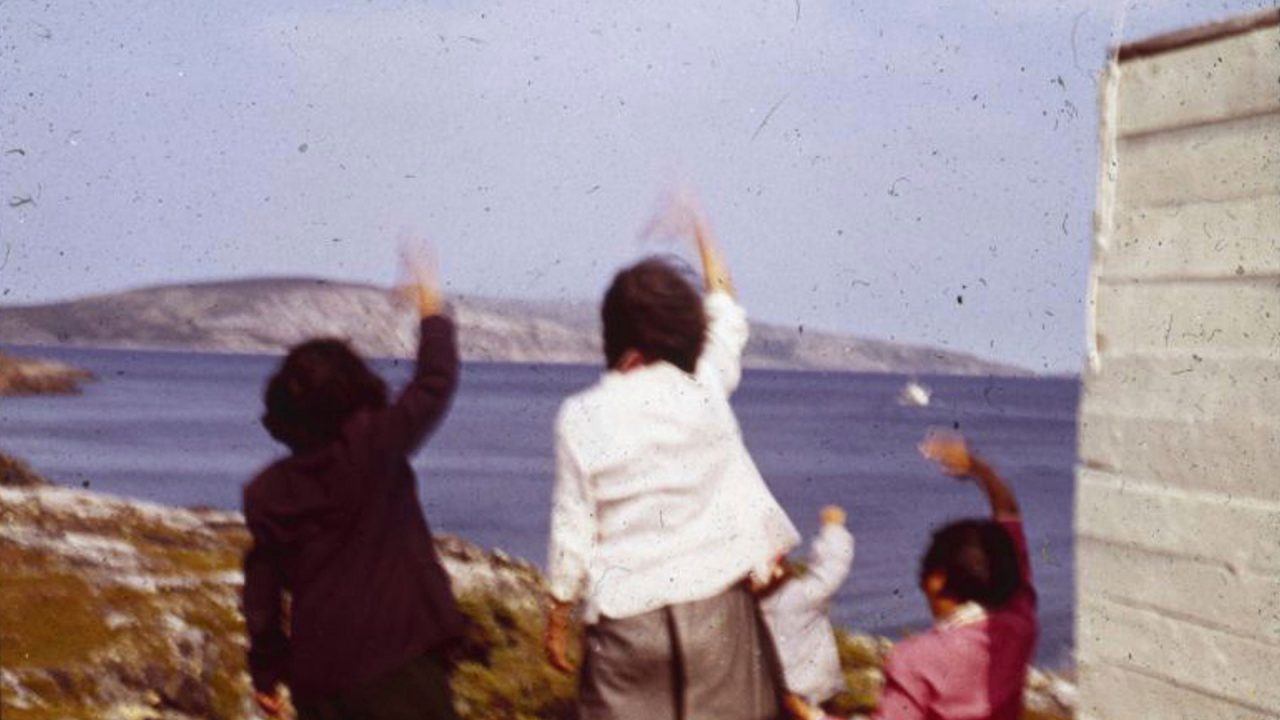
Mini-Lesson for Forgotten Warriors
Mini-Lesson for Forgotten Warriors
Mini-Lesson for Forgotten Warriors
School Subjects:
- History: WWI and WWII
- Indigenous Studies: History/Politics
- Social Studies: Canadian Politics and Government
Ages: 15-17
Forgotten Warriors, Loretta Todd, provided by the National Film Board of Canada
Warnings: Archival black-and-white footage of slain soldiers and animals.
Keywords/Topics: Indigenous veterans, WWI, WWII, Veterans’ Land Act, Treaties and agreements, unfair treatment, remembering veterans
Film Synopsis: This documentary introduces us to thousands of Indigenous Canadians who enlisted and fought alongside their countrymen and women during World War II, even though they could not be conscripted. Ironically, while they fought for the freedom of others, they were being denied equality in their own country and returned home to find their land seized.
Educational Synopsis: This mini-lesson will look at the unforgettable memories and hardships of Indigenous soldiers on the frontlines of battle during World War II, compare their experiences of returning home to those of non-Indigenous soldiers, and examine the laws and policies that were in place, which did not allow fair and equal treatment of Indigenous veterans who made the same sacrifices on the battlefield as non-Indigenous veterans.
Overarching Question: How can we honour the memories and sacrifices of Indigenous soldiers who fought for Canada, so they are not forgotten?
Pre-Activity: Class Discussion
Why did the filmmaker title the film Forgotten Warriors and not Forgotten Soldiers?
What is the difference between a warrior and a soldier? Soldiers are there to defend their country, their borders and the country’s values. The definition of a warrior is slightly different. In Plains Cree, warrior means: “Those with the biggest heart.” They are the people who are the most self-sacrificing and self-effacing. Their only goal is to protect the people.
Activity 1: Going to War
“We treated each other all the same. It didn’t matter.” – George Doxtater, WWII Veteran
Activity: Small Group Discussions
Watch Clip: 0:00–5:33
Reasons for going to war
- After watching the clip, students will discuss in small groups and create a list of reasons why, according to what was said in the clip, Indigenous people went to war.
- Have students then make a list of reasons why non-Indigenous people might go to war for their country.
- After creating the lists, the students will create a Venn diagram activity using this guiding question: What are the similarities and differences between non-Indigenous and Indigenous people’s reasons for going to war?
Each person has a unique reason for choosing to go to war for their country. Some did not have a choice due to conscription, but others made a definitive choice. Some of these reasons may be similar for Indigenous and non-Indigenous people, for example: “to protect my country and my family,” “a fear of Hitler,” “not wanting to be left behind,” “poverty,” or “pride and duty.” And some reasons may be different, such as “to protect the Treaty agreement with the Queen” or “being allies to the British crown.”
Class Discussion
Watch the Clip: 7:24–12:42
Experiences on the frontlines
As a class, discuss the experiences that were shared in the clip of the Indigenous soldiers who fought in WWII. Discuss whether you think the experiences of non-Indigenous soldiers were similar or different when fighting on the frontlines. Why or why not?
Summary
The goal of this activity is to show that although the reasons for going to war are all unique, the experiences of Indigenous soldiers on the battlefields during WWII were more similar to those of non-Indigenous soldiers than different. The sacrifices that soldiers made in choosing to join the Canadian forces were the same; the enemy did not discriminate when choosing a target. Many soldiers, whether they were Indigenous or non-Indigenous, lost their lives, were permanently injured, experienced severe trauma, and came home with battle wounds both visible and invisible.
Activity 2: Coming Home
Activity: Jigsaw
- The teacher will separate the class in two groups.
- Group 1 will complete activity A.
- Group 2 will complete activity B.
A: Watch clip: 20:20–28:10
Economic consequences
- After viewing the clip, Group 1 will complete the following table:
| What were the non-Indigenous veterans given by the government when they came back from the war? |
What were Indigenous veterans and their communities given or what was taken away from them when they came back from the war? |
B – Watch clip: 31:50–35:55
Personal consequences
- After viewing the clip, Group 2 will complete the following table:
| What hardships and consequences did Indigenous veterans have to endure after their years of service? |
After the groups have completed their tasks, students from Group 1 will join up with a student from Group 2 and they will share their lists. Lastly, have the whole class share ideas and discuss the following question in a sharing circle:
In your opinion, why were Indigenous veterans given unequal treatment and terms when they returned home?
Summary
The main goal of this activity is to underline and explore the ways Indigenous veterans were treated unfairly and with a lack of honour for their service. Although they made the same sacrifices, they were not recognized or compensated in the same ways as non-Indigenous soldiers. While non-Indigenous veterans benefited from the Veterans’ Land Act, many Indigenous veterans were excluded from taking advantage of these same benefits and were not informed of what they were entitled to for serving in the war; some even lost their Indian Status outright. In addition to this, many Indigenous communities were impacted as the government also took away land and resources from reserves to use for military purposes and to give to non-Indigenous veterans. Whole First Nations communities still mourn the loss of the thousands of acres of prime land that they were forced to surrender.
Activity 3: Revealing the Truth to Create a Path towards Recognition and Reconciliation
Pre-activity: Group Discussion
- How can veterans play a vital role in their communities?
Activity: Video Clip and Small Group Discussion
Watch clip: 35:57–39:10
Working together for recognition
View clip: 43:35–46:50
National War Memorial and travelling to Normandy
- In small groups, discuss and create a list of good endeavours, tasks and responsibilities accomplished by Indigenous veterans in their communities.
- Discuss as a whole class and create a class list of those accomplishments.
- As you go over the list of accomplishments, discuss the following question:
- If we go back the original definition of an Indigenous warrior: How do the war veterans depicted in the film fit that description and definition?
Summary
The goal of this activity is to further highlight the accomplishments of Indigenous veterans so they are not “forgotten warriors.” We want the students to learn that even though the Canadian government actively enforced laws and policies to erase the contributions of Indigenous veterans (as seen in the film, it was not until 1995 that Indigenous veterans were allowed to lay a wreath at the National War Memorial on Remembrance Day), Indigenous veterans used their resiliency, knowledge and skills to educate, guide and fight for their political rights and freedoms. Because of this they can be called Warriors.
Postscript
Forgotten Warriors was produced more than 25 years ago with the participation of Indigenous veterans whose contribution to the documentary allowed the public to hear their stories and experiences, as they fought another battle at home to be equally recognized and compensated for all that they had lost. The fight at home for these veterans should not be forgotten, as it wasn’t until the early 2000s, 55 years after the end of WWII, that some Indigenous soldiers received compensation. In February 2019, the House of Commons Standing Committee on Veterans Affairs tabled a report entitled Indigenous Veterans: From Memories of Injustice to Lasting Recognition, which listed 12 recommendations to ensure that Indigenous veterans are aware of their benefits, have equal access to services provided to veterans and can commemorate those from their communities who they lost in the war. You can find the summary of these recommendations here and the full report here.
Take Action
Students can pick one of the following Indigenous veterans or find their own, research them and create a trading card with the information gathered. Here is the important and essential information that can be written on the card:
- Image or photo of veteran;
- Date of birth / date of death;
- Home community and nation;
- Military conflict(s)/war in which veteran participated;
- Major military accomplishments;
- Major community or political activities after years of military service.
Students can share and present their veterans/cards to the class.
List of possible Warriors:
- Joseph Brant
- Tecumseh
- Cameron Brant
- Francis Pegamagabow
- Tom Longboat
- Tommy Prince
- Noel Knockwood
- Edith (Anderson) Monture
- Charles Checker Tompkins
- Willard Bolduc
- David Greyeyes
- Guillaume Charrette
- Virginia Pechawis
- Charles Henry Byce
- Private William Cleary
- Edwin Victor Cook
- George McLean
- Oliver Milton Martin
- Big Feather – Dr. Gilbert Monture
- Henry Louis Norwest
- Joseph Roussin
- Alexander George Edwin Smith
- Mary Greyeyes Reid
Suggested Extension Activity
Using all the knowledge acquired, the teacher and students can organize a special ceremony to commemorate the Indigenous warrior veterans. Hopefully this ceremony can take place during Remembrance Day ceremonies for the school community, to honour and educate the school community about the valorous participation of Indigenous people in Canada’s war efforts.
This mini-lesson was written in collaboration with project consultant Joël Tétrault.
A francophone Métis from Manitoba, Joël Tétrault currently teaches Indigenous perspectives in the Louis Riel School Division in Winnipeg. A passionate educator, he has worked in education for 18 years, teaching mainly Canadian history, Indigenous perspectives, law and francophone cinema. For Joël, teaching means empowering students and encouraging them to take action to build a society that’s more just and equitable for all.
Pour lire cet article en français, cliquez ici.
Discover more Mini-Lessons | Watch educational films on NFB Education | Watch educational playlists on NFB Education | Follow NFB Education on Facebook | Follow NFB Education on Pinterest | Subscribe to the NFB Education Newsletter



